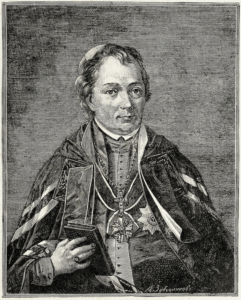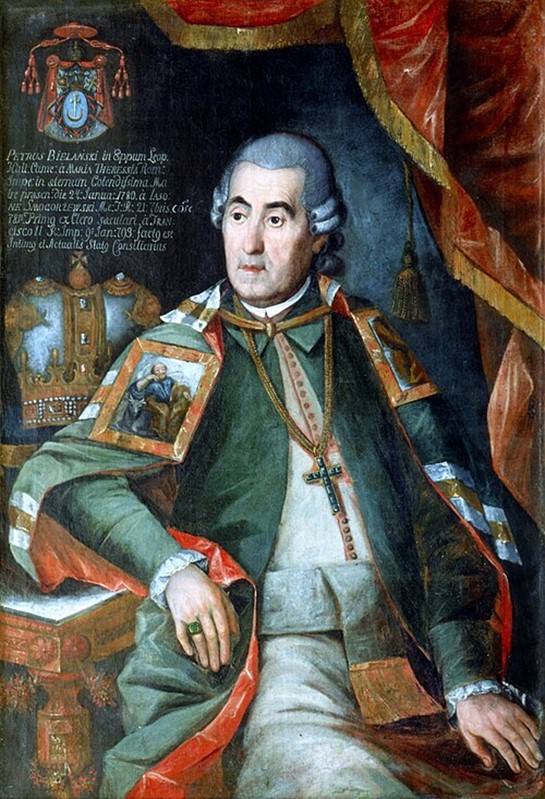by András Fejérdy
In his 1928 work Der Politische Eid, Ernst Friesenhahn introduced the concept of the “political oath” as an umbrella term to describe a range of oaths that became emblematic of the emerging modern state at the turn of the eighteenth and nineteenth centuries. These oaths, which included oaths of loyalty to the head of state or the constitution as well as pledges by officials to uphold the duties of their offices, represent a formalised commitment to the state. They were taken by individuals in various public roles who swore allegiance to the state and promised faithfully to execute the responsibilities with which they had been entrusted.
These oaths ranged from succinct statements to more detailed declarations of up to 15 or 20 lines. They addressed the individual’s obligations in varying degrees of specificity. Typically, the oaths contained both affirmations—commitments to act in the service to the state—and prohibitions—pledges never to commit acts that might harm the interests of the state.
In addition to the oaths of loyalty taken by state officials, Friesenhahn also includes oaths taken by representatives of the church, such as bishops, in the broader category of political oaths. A notable early example of this in the Habsburg lands is the modern oath of loyalty to the state required of bishops, introduced by Joseph II in his decree of 1 September 1781. Joseph II’s general aim in introducing this oath was to ensure that the bishops of the monarchy would remain loyal to him when the interests of the state and the interests of the church clashed. The decree was issued against the backdrop of ecclesiastical reforms aimed at consolidating the power of the state, asserting its independence from external influences, and fostering the development of a modern absolutist state.
The specific practical reason for the introduction of this oath of allegiance by the bishops to the sovereign, however, was to curb any unauthorised or potentially dangerous foreign (especially papal) interference in Habsburg affairs. Under the terms of an imperial patent issued on 26 March 1781, all papal documents—whether dogmatic, ecclesiastical, or disciplinary—were subject to the royal placetum. Following the extension of the royal placetum to all papal documents, Joseph II could not fail to notice that the text of the bishops’ oath to the Pope was consistently attached to the papal bull of appointment. Since it did not seem advisable to prevent the bishops from swearing an oath of allegiance to the Pope, the Council of State in Vienna decided to introduce an oath of allegiance to the emperor to counterbalance the promises made in the oath of loyalty to the Apostolic See. The resulting decree stipulated that the emperor would only grant the placetum for the promulgation of papal appointments if two conditions were met. First, the oath required by the Pope and attached to the bull of appointment had to be taken by the bishops in its “original” sense, i.e. as a promise of canonical obedience. In other words, it could not violate the sovereign rights of the emperor or infringe on or limit the duties of the oath-taking subject in any way. Second, the bishops had to take the newly prescribed oath of allegiance to the monarch before swearing loyalty to the Apostolic See.
The document promulgating the imperial decree of 1 September 1781 introduced the oath and gave detailed instructions for the ceremony itself. The oath was to be administered by the bishop to the head of the province or state in the presence of the two most senior government councillors of the local government. After the oath had been taken, it was to be signed by both the bishop and the administering official, and the original document was to be sent to the imperial court.
The first swearing-in ceremony with the new oath of allegiance took place in Lviv on 23 September 1781, just over ten days after the promulgation of the imperial decree (12 September 1781). This event marked the consecration of Piotr Bielański, who had been appointed Bishop of Lviv on 30 October 1779. His appointment was notable as the first by the Austrian government following the partition of the Polish-Lithuanian Commonwealth. This time, Vienna broke with previous tradition by appointing a secular cleric of common birth rather than a monk from a noble family, reflecting an expectation of loyalty to the state. Against this backdrop, it is clear why Bielański was the first to take the new oath of allegiance. His appointment was a clear indication of the government’s desire for a church leader who was more dependent on the state than on traditional ecclesiastical authorities.
A contemporary article printed in Gazzetta Italiana di Vienna (no. 81) reports on the swearing-in and consecration ceremony. According to this article, this first oath of allegiance was taken as part of a ceremony that followed the one prescribed by the government. The oath of allegiance was taken by the new Bishop of Lviv to Count Josef Brigido von Brezowitz, governor of Galicia as an Austrian province since 1778, in the presence of two senior Galician government councillors. Bielański then took the traditional oath of allegiance to the Apostolic See before Archbishop Jason Smogorzewski of Kiev.
Article from Gazzetta Italiana di Vienna no. 81.
Lviv, 23 September 1781
This morning in the Cathedral Church of St. George of the Greek-United Rite by Mgr. Jason Smogorzewski, Metropolitan and Primate of all Red Rus’, who came here expressly on the 21st, accompanied by two other Bishops and two Abbots, the Most Reverend Don Pietro Bielanski, formerly Canon Guardian of the said Cathedral and Administrator General of the vacant See, was consecrated Bishop. The consecration was preceded by the oath of allegiance, which Monsignor Bielanski, in accordance with recent sovereign decrees, took before His Imperial Royal Apostolic Majesty, before the August Portrait, hanging under a baldachin, in the hands of the Most Excellent Governor Count of Brigido, in the presence of two councillors of the Royal Government, and then, after the usual profession of faith, he swore obedience to the Supreme Pontiff and to the Metropolitan, his immediate superior.
Articolo della Gazzetta Italiana di Vienna n. 81.
Leopoli 23 7bre 1781
Questa mattina nella Chiesa Cattedrale di S. Giorgio di Rito Greco-Unito da M[onsi]g[o]r[e] Giasone Smogorzewski Metropolita e primate di tutta la Russia Rossa, qui espressamente venuto il di 12, assistito da due altri vescovi, e da due abati, e stato consecrato in vescovo il R[everendissi]mo Sig[nore] D[omino] Pietro Bielanski, per l’addietro custode di d[ett]a Cattedrale, e Amm[inistrato]re generale di sede vacante. La consecrazione e stata preceduta dal giuramento di fedeltà, che secondo le recenti sovrane ordinazioni M[onsi]g[o]r[e] Bielanski fece a S[ua] M[aestà] I[mperiale] R[eale] e Ap[osto]lica innanzi all’Augusto Ritratto, appeso sotto un Baldacchino, nelle mani del Ec[cellentissi]mo Gov[ernato]re Conte di Brigido, alla presenza di due consiglieri del regio governo e quindi dopo la solita professione di fede, giuro l’obbidienza al sommo Pontefice Romano, come ancora al Metropolita suo immediato superiore.

The introduction of the oath of allegiance in 1781 marked a significant shift in the relationship between Church and state in the Habsburg Monarchy, but it did not go unchallenged. The original text of the oath, which demanded unconditional obedience to all state laws, met with opposition from the Church. During his visit to Vienna in the spring of 1782, Pope Pius VI succeeded in having the oath revised. From May 1782 onward, the original text was replaced by a version modelled on the Gallican oath, a form that had been used in France for decades. This marked a further evolution in the relationship between the Church and the state under the reforms of Joseph II.
Source of the pictures: Wikimedia Commons
